Nobody likes a tight, achy lower back. It can make it uncomfortable to walk or even sit, and it can mess with our sleep, leaving us not only in pain, but grumpy to boot.
Yet according to a June 2023 analysis in The Lancet Rheumatology, a staggering 619 million people across the world experienced low back pain in 2020 (the latest date available), making it the leading cause of disability. Luckily, the solution to the problem rarely involves going under the knife. Treatment typically revolves around simple interventions, like doing some of the best back stretches.
“Most cases can be treated conservatively through physical therapy,” says California-based physical therapist Jacob Van Den Meerendonk, DPT. In fact, only about 10 percent of people with back pain require surgical intervention, according to the American Association of Neurological Surgeons (AANS).
Experts In This Article
The key is to target exactly what’s causing the problem in the first place. Here’s what you need to know before you start doing any old back stretches at random, plus the best back stretches for flexibility to add to your routine.
In This Article
What causes lower back tightness?
There are a few different things that can lead to lower back tightness. The most common one these days is a desk job, according to Amanda Robotti, DPT, OCS, a physical therapist at the Hospital for Special Surgery in New York. “The human body wasn’t designed to sit for eight, nine, 10 hours a day,” she says. Yet many of us don’t have any other choice. That habitual posture can lead some muscles to become tight and short, and other ones to weaken.
A core that’s not as strong as it should be can also put extra strain on your back. There could also be something going on further up in your middle or upper back that’s causing your low back to tighten up in response. “If a muscle is overworked because it’s not supported by its teammates in the area, that could contribute to tightness,” Robotti says.
Van Den Meerendonk adds that often, patients who come to him with tension in their low back have something going on in their spine, like a disc herniation or degenerative disc disease. “We could have a pinched nerve in that area,” he explains. That can send signals to the muscle to stiffen up, so you’ll feel like you need to start stretching the muscles, when really you need to mobilize your spine.
Why lower back flexibility is important
A low back that can move freely doesn’t just help us hit impressive yoga poses. Flexibility is important because we need a certain amount of it to get through our daily lives, whether we’re picking up our kids or putting things away on high shelves.
Otherwise, other body parts are likely to compensate. “If we’re really tight and stiff in our lower back, we might see that it’s affecting our middle back, our neck, the hip area—those muscles are being overtaxed,” Robotti says.
The best back stretches for flexibility
The best back stretches for flexibility depends on exactly what’s going on that’s causing your tightness. A disc herniation is going to call for something different than an overworked muscle, for instance. “Particularly if a nerve is involved, we need to be very specific in how we’re stretching the back to not irritate our symptoms,” Robotti says.
Here are a few of the best back stretches for flexibility that can help in some of the most common scenarios.
For general muscle tightness
If your lower back muscles are simply tight, these stretches can increase flexibility in the area.
1. Single knee-to-chest stretch
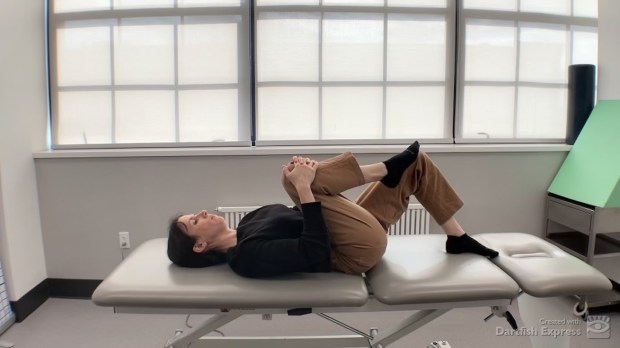
- Lie down on your back with the knees bent and both feet on the floor.
- Use your hands to pull one knee toward your chest.
- Relax into the stretch without pulling so hard that you feel pain.
- Hold for 30 to 60 seconds.
- Release and repeat two or three times on each side.
2. Double knee-to-chest stretch
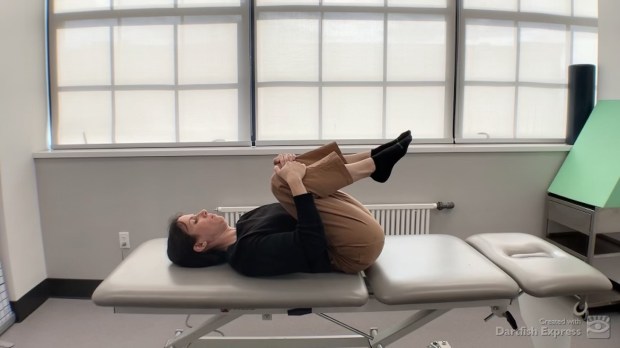
- Lie down on your back.
- Bend both knees and use your hands to pull them in toward your chest.
- Relax into the stretch without pulling so hard that you feel pain.
- Hold for 30 to 60 seconds.
- Release and repeat two or three times.
3. Lower trunk rotation
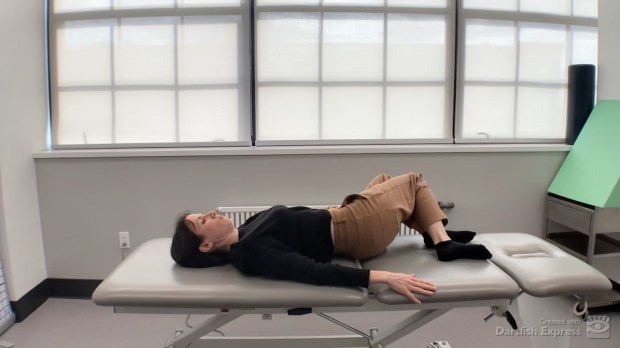
- Lie down on your back with your knees bent and both feet on the floor. Keep your knees and feet as close together as you comfortably can.
- Let your knees drop to one side.
- Hold for 5 to 10 seconds.
- Rotate to the other side.
- Repeat, going from side to side.
For middle back rotation
Sometimes lower back pain stems from tightness in the middle back, in which case this stretch can help.
4. Open-book stretch
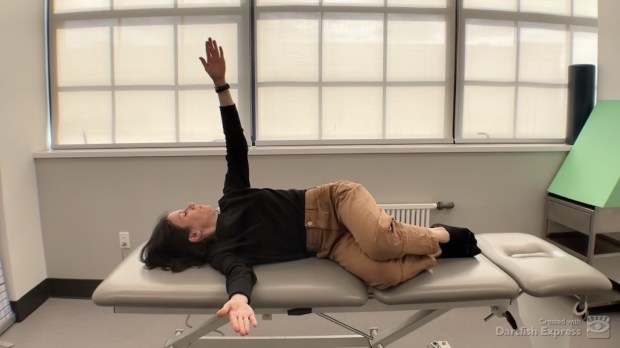
- Lie on your side with your knees and hips bent at 90 degrees, legs stacked on top of each other, and your hands straight out in front of you.
- On an inhale, lift the top hand up and reach to the ceiling, then exhale as you reach it back behind you to twist your trunk. Follow your hand with your eyes and head the whole time.
- Slowly bring the hand and head back to the starting position.
- Repeat three to five times, then switch sides.
For hip flexor flexibility
People don’t usually think of the iliopsoas, one of our hip flexor muscles, as a back muscle because it comes through the front of the hip. But it directly attaches to the lumbar vertebrae, which means it can create problems in our back if we let it get tight, according to Robotti.
“If that muscle is short, it’s going to tug on the lower back. And we don’t want anything tugging on the lower back,” she says. This stretch can help to keep it long and loose.
5. Kneeling half-lunge
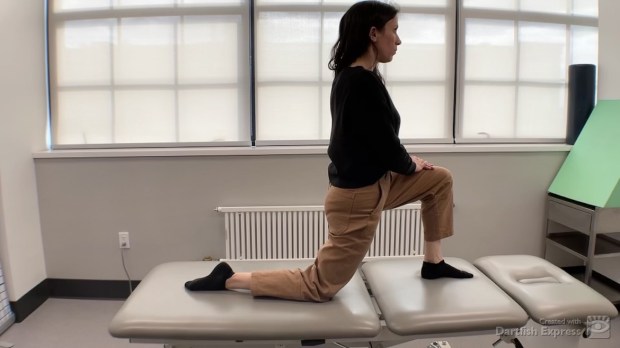
- Kneel on one knee with the other foot forward. Tuck your hips slightly.
- Lean your whole torso forward until you feel a stretch in the front of the hip.
- Hold for 30 to 60 seconds, then back off.
- Repeat two to three times, then switch sides.
To do in a chair
While it’s ideal to get up and move around whenever we can, not all of us can get out of our chairs during the day. These moves can be done while sitting to bring some blood flow to your back.
6. Seated mid-back rotation
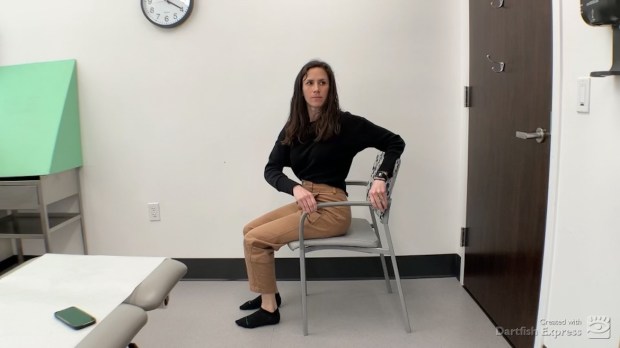
- Sit up tall in a chair with both feet planted firmly on the ground.
- Grab the arm rest on your right, and inhale to prepare.
- On an exhale, use that arm rest to twist your torso to the right.
- Hold for five seconds, then return to the start.
- Alternate back and forth between both sides.
7. Seated forward bend
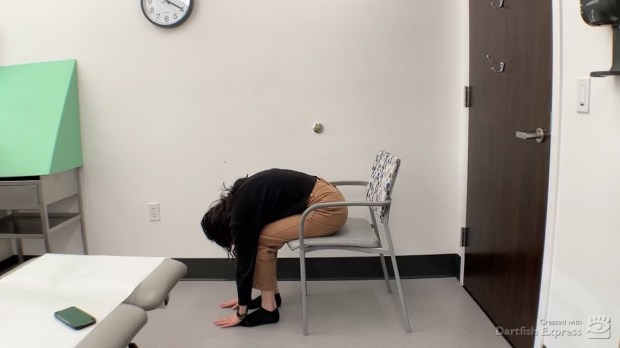
- Sit up tall in a chair with both feet planted firmly on the ground.
- Lean down over your lap and reach for your toes.
- Hold for 30 to 60 seconds.
8. Seated back extension
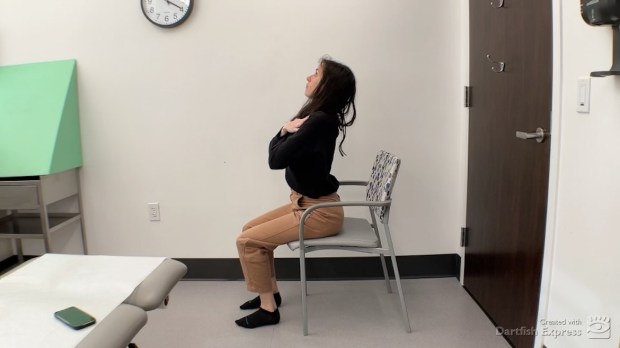
- Sit up tall in a chair with both feet planted firmly on the ground.
- Place your hands across your chest, gently resting on opposite shoulders.
- Lift your chest up, keeping your head in line with your spine to go into a slight backbend, extending from the middle of your back.
- Hold for five seconds, then return to the start.
For spinal mobility
Spinal conditions like disc herniation or degenerative disc disease call for stretches that mobilize the spine itself, according to Van Den Meerendonk. “We’re getting the discs to squeeze on one side and open on the other,” he says. “We can improve blood flow, and that can bring about a lot of pain relief. [It] can be very therapeutic.”
9. Upward-facing dog
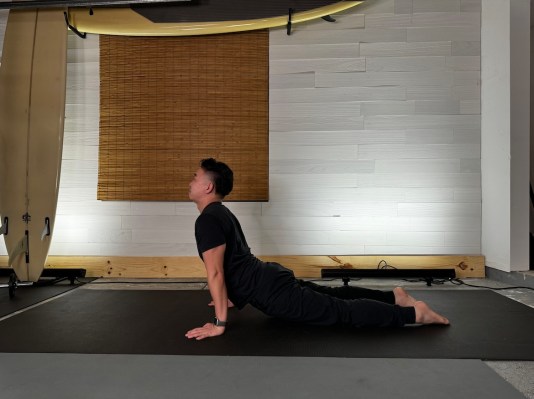
- Lie on the floor, face down with your hands placed directly underneath your shoulders.
- Press down with your hands and your feet to push yourself up off the floor, straightening your arms, and looking forward and up on a diagonal (without crunching your neck).
- Hold for five to 10 seconds, then release.
10. Child’s pose

- Start in a tall kneeling position.
- Sit back on your heels, with your shins and tops of the feet on the ground.
- Fold forward to lay your chest on top of your thighs. Reach your hands forward in front of you.
- Hold for 30 to 60 seconds.
Safety tips for stretching your lower back
You should never stretch to the point that you feel sharp, stabbing pains anywhere in your body. But this is especially true in your lower back. “That could be a sign we’re pinching a nerve,” Van Den Meerendonk says. “Stretches of the low back should be feel-good stretches.”
Robotti says that a good sensation to aim for is strong, but comfortable. “You don’t want to force yourself into a stretch if you haven’t really been moving all day and that muscle’s really tight,” she says. You can even consider your first rep as a warm-up, then ease in deeper each time you repeat it.
When to see a medical pro for your back pain
If you’re experiencing neurological symptoms along with your back pain, you’ll want to have an expert take a look. For instance, radiating pain down the leg, numbness and tingling into the toes, or weakness that makes your legs buckle or causes you to fall could be signals that something is going on with your spine. “Get into PT and get it taken care of,” Dr. Van Den Meerendonk says.
Even if all you’re experiencing is back pain, but it just won’t go away, follow up with a doctor. “Maybe something else is going on, and maybe you just need some more guided exercises and treatment because stretches will only get you so far,” Robotti says.
FAQ
1. Why is my back so inflexible?
If you’re doing stretches regularly and still not seeing results, make sure you’re not forgetting the other part of the equation: strengthening. “We need to get you stronger in the muscles that support the area so that we’re not seeing that overuse in the tight muscles,” Robotti says. Specifically for the lower back, she recommends strengthening the core and the glutes.
Also make sure you’re moving your body regularly through activities like walking, and limiting the time you spend sitting if you can. “I definitely recommend a standing desk,” Robotti says.
If you’ve checked those boxes for two or three months, and still aren’t seeing results, book an appointment with your doctor to check if there’s something else going on.
2. Does stretching every day increase flexibility?
All of these back stretches for flexibility are gentle enough to do daily. But doing them three to five times a week will still get you positive results and can help improve flexibility, Robotti says.
3. How long does it take to improve back flexibility?
The amount of time it takes to make your back more flexible depends on what’s causing tightness in the first place, as well as your history of injuries and how old you are. “We do start to lose flexibility as early as our 30s,” Robotti says. “But the nice thing is, if you are doing something to work on it, you can improve with time, whether you’re 20 years old or you’re 90 years old.”
She says that she typically sees positive changes in her patients within the first month if they’re stretching and strengthening the area a few times a week—people even become more flexible by month two.
Well+Good articles reference scientific, reliable, recent, robust studies to back up the information we share. You can trust us along your wellness journey.
- GBD 2021 Low Back Pain Collaborators. Global, regional, and national burden of low back pain, 1990-2020, its attributable risk factors, and projections to 2050: a systematic analysis of the Global Burden of Disease Study 2021. Lancet Rheumatol. 2023 May 22;5(6):e316-e329. doi: 10.1016/S2665-9913(23)00098-X. PMID: 37273833; PMCID: PMC10234592.
Source: Well and Good








